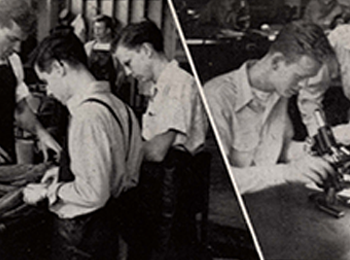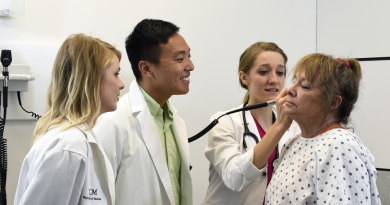Sunburns: what you need to know
Sunburns occur when the skin is exposed to excessive ultraviolet light. They can lead to long-lasting damage. Dr. Vicky Zhen Ren, a dermatologist and assistant professor at Baylor College of Medicine, answers common questions about sunburns.
 Q: What happens when I get a sunburn?
Q: What happens when I get a sunburn?
A: Within 8 hours of UV exposure, your skin will usually turn red and tender due to acute inflammation and damage to the skin. This response peaks 12-24 hours after exposure. If severe, sunburns can progress to swelling and blistering or lead to thermoregulatory and fluid/electrolyte imbalances that may require hospitalization.
Q: Are there different levels of sunburn?
A: Yes, and this has implications on their care and potential sequelae:
- First-degree sunburns affect the superficial epidermis and heal spontaneously within a week. You will likely see peeling of the skin, which is the body’s way of shedding damaged skin.
- Second-degree sunburns damage the dermis, which is the layer of skin below the epidermis. Blisters may form and take weeks to heal.
- Third-degree sunburns reach the subcutaneous fat. These burns are more commonly caused by fire or chemicals and require urgent care or hospitalization.
Q: Aside from irritation and redness, what else can happen if I get a sunburn?
A: If an acute sunburn is severe enough, it can lead to transepidermal fluid loss via damaged skin. Drinking extra water when you are sunburned helps prevent this fluid loss and subsequent dehydration.
Sunburns also increase your chances of melanoma and non-melanoma skin cancers due to the resultant DNA damage. Both childhood and adult sunburns contribute to this risk.
Q: What is the best way to ease and recover from a sunburn?
A: The best advice is to not get a sunburn in the first place by following proper sun protection measures, including using a broad-spectrum SPF 30+ sunscreen, wearing protective clothing (e.g., tightly woven fabrics, wide-brimmed hat), and minimizing sun exposure during peak sunlight hours.
If you do develop a sunburn, get out of the sun. Take a cool bath or shower to relieve pain, and after patting dry, apply a moisturizer that contains aloe vera or soy. A topical steroid, such as over-the-counter hydrocortisone, and an anti-inflammatory medication, such as ibuprofen, can help with the associated pain. Drink water to prevent dehydration, and rather than peeling them back, let blisters act as natural bandages as they heal. Be particularly diligent about sun protection as you’re healing from a sunburn.
Learn more about Baylor Medicine Dermatology services.
By Aaron Nieto



